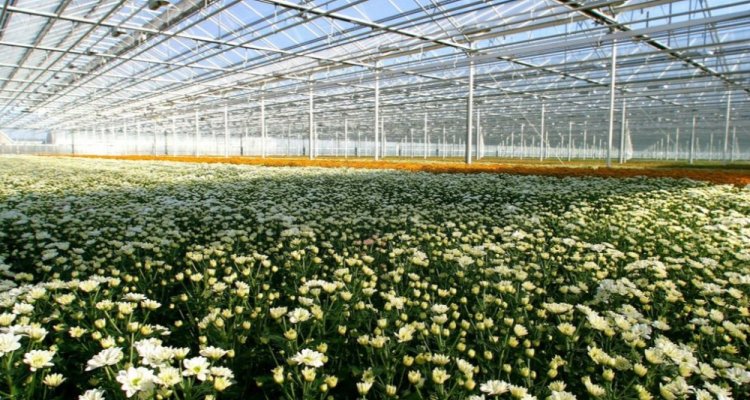
Project
Call for Partners: Photonics for Greenhouses & Cold Stores
This is a call for partners issued by AMOLF, WUR and University of Utrecht for the NWA-ORC research proposal “Photonics for Greenhouses & Cold stores”. Our goal is to bring advanced photonics into greenhouses and cold stores to improve the energy use, crop yield and food quality control. The main idea is to use coverings that absorb sunlight and redistribute it into light, heat, electricity, and spectroscopic signals that can be used to dynamically optimize growth and storage conditions.
The Netherlands has a large infrastructure for food production, including ca. 10.000 ha of greenhouses and 15,000,000 m2 of cold stores. A large high-tech agrifood industry has emerged around food and flower production, which has led to one of the highest crop yield per m2 and lowest water consumption per kg product of any country in the world. However, there are still huge opportunities to improve the use of one natural resource: solar energy. Solar energy is a natural resource that comes free of charge. We believe that solar energy can help the agrifood sector in improving temperature control, lighting and energy distribution of greenhouses and cold stores and thereby reducing energy input while increasing quality control of the agrifood product. We aim for optimally using solar radiation both in the growth and in the post-harvest moment of the agrifood chain.
The proposal’s innovative ideas
This proposal focusses on two ideas:
- Optimally use energy from solar radiation and convert it to light, heat or electricity in a dynamic way, that suits the needs of the agrifood product at each moment in time.
- Apply special coverings on existing surfaces (like racks, walls, crates) and provide these with light of certain wavelengths for non-destructive monitoring of the agrifood product without needing separate imaging systems.

Both ideas can be realised by developing and applying spectral coverings consisting of photonic structures. These novel materials have the property that they absorb light and can reemit at the wavelengths that are needed. Ideas for these coverings range from transparent coverings, where only some wavelengths are filtered out to be used for heat or electricity generation, to completely opaque coverings, where no natural light comes through at all and all emitted wavelengths are generated by the photonic designs.
Are you interested?
We are looking for industrial and societal partners to strengthen our consortium.
You can join in 3 ways:
- Contribute financially (cash, in-kind or both)
- Join an advisory board
- Receive funding to help carry out the research (not applicable for industrial partners)
With a small financial investment (10% total cash/in-kind matching required for the full program) giving you access to a large research program that spans fundamental to applied and scientific to societal aspects. We want your input to make sure we are addressing the most pressing challenges facing photonics in future sustainable food production.